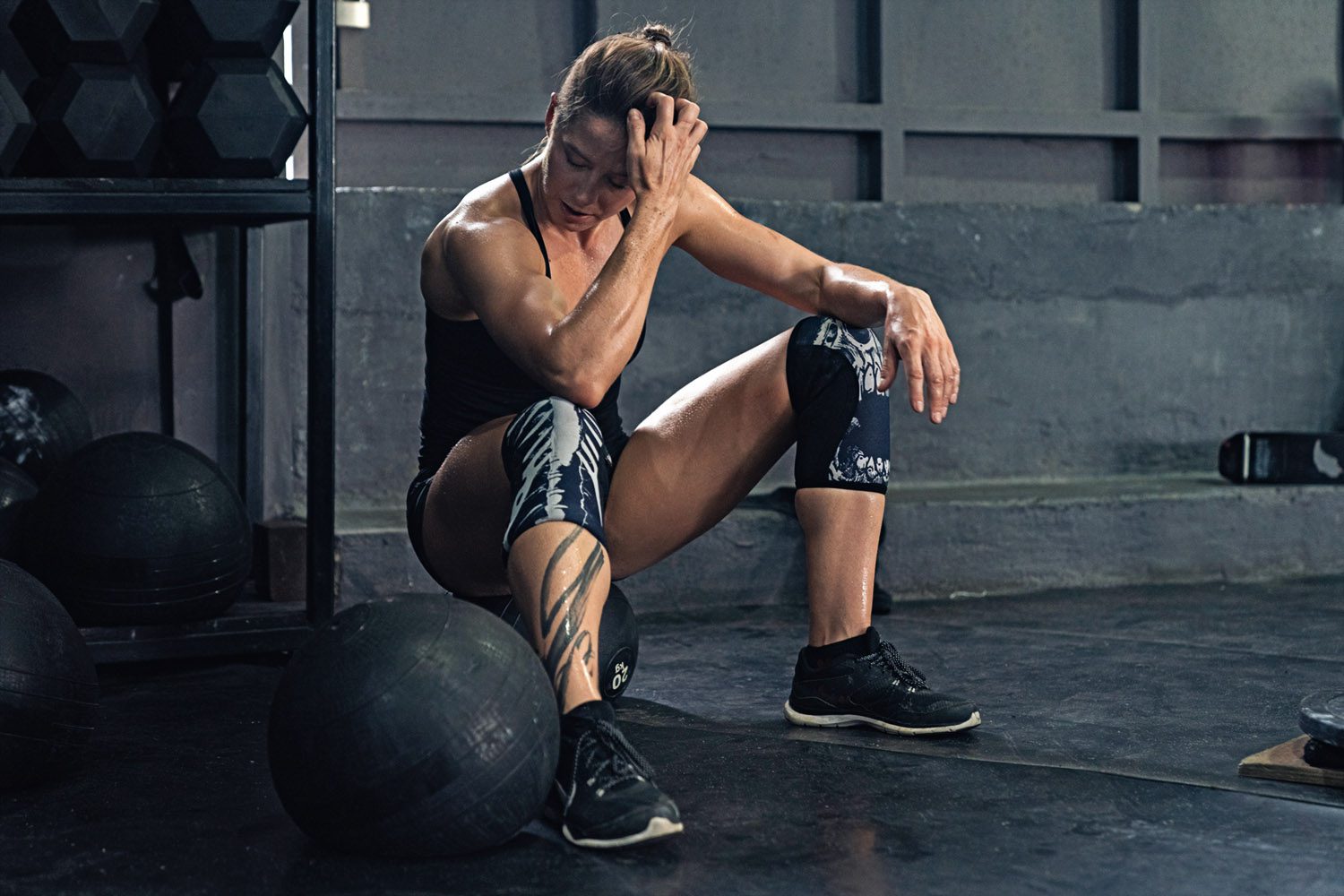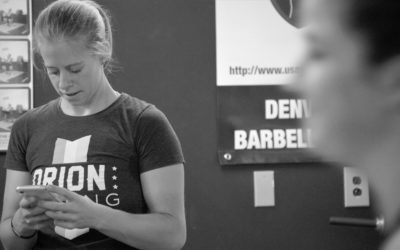Understanding HRV Trends: A Beginner’s Guide

HRV is among the buzzy fitness metrics to surface with wearable tech in recent years, but there are good reasons — understanding your heart rate variability in the context of your nervous system is a huge indicator of your overall health. But the terminology and data can be confusing.
Steve Gagliardi is a former D1 lacrosse player and founder of LaxFarmer & BodyBlizzard.com. Based out of Austin, TX, Steve is passionate about creating online resources that research and review the best new goodies in health & fitness. He’s here to guide you through HRV trends, including tips on how to improve your HRV.

Measuring Fitness
Are you actually getting fitter? Let’s run down the list. New squat PR, check. Faster mile time, check. Better sleep, check. But wait a minute… is this the right way to measure progress? The truth is, there are dozens of data points you can use to track improvements in fitness & recovery. However, if you’re looking for a single macro pattern to indicate your overall fitness, it is important to understand your heart rate variability trend.
Heart rate variability (HRV) is a measure of the beat-to-beat changes in heart rate. As an athlete, our bodies need to be able to adapt quickly to stress. HRV enables this. So, you might think high HRV means you’re a fitter person — not so fast. An isolated HRV metric tells us very little about our health. Instead, the pattern of our HRV over time is much more important. This is what we call HRV trends.
In this article, we will break down the common mechanisms behind heart rate variability and more importantly, how you can improve your HRV trend to unlock enhanced fitness and recovery levels.
What Is Heart Rate Variability?
Heart rate variability (HRV) measures the variation in time between heart beats. It can be used to indicate how well your body is adapting to stress and can provide important information about your overall health.
Initially, you might assume your heart beats like a metronome at regular intervals. But it turns out that we have natural variability in the spacing between our heartbeats. For example, if your heart beats 60 times per minute, you might assume that it beats once every second. But the time between the first beat and second beat could take 1.1 seconds. And the time between the second and third beat could take 0.9 seconds. Rather than beating at a static cadence, your heart beats at a varied pace.
This is what we call heart rate variability, and it becomes even more identifiable when measuring in milliseconds.
HRV Mirrors Your Nervous System
Heart rate variability is heavily influenced by whichever autonomic nervous system is most dominant. Broadly speaking, we have two nervous systems: one that is under our control and one that is not under our control. We go about our day breathing, digesting, hearts beating. Ever notice how we are not consciously performing these actions (thankfully)? That’s because our autonomic nervous system regulates them on its own.
The autonomic nervous system divides into two branches: the sympathetic system and the parasympathetic system. The parasympathetic system is the “rest and digest” system. It’s the down-regulating system that conserves energy, aids in digestion, and slows your heart rate. The sympathetic system is the “fight or flight system” that makes energy more available (like during a workout), dilates our pupils, slows digestion, and increases heart rate.
So What Does This Have To Do With HRV?
To put it simply, when the sympathetic system is revved up, HRV goes down. When the parasympathetic is in control, HRV goes up.
As your heart rate speeds up (in sympathetic state), there is less variability between the beats. As your heart rate slows down and your body relaxes, there’s more variability between the beats.

Change the Way You Train
Why Is HRV A Sign Of Fitness?
Heart rate variability is an indicator of how well your body adapts to stress. The more variable your heart rate, the more capable your body can respond to its environment and switch gears between the two autonomic systems. High HRV is an indicator of exceptional cardiovascular health, fitness, and recovery. Low HRV is associated with inflammation, chronic stress, and cancer.
In addition to being an adaptability mechanism, high HRV allows your body to dedicate resources to other areas during athletic performance which is critical for competition. A high HRV reflects a balanced nervous system capable of responding to its environment.
HRV is also a key signal of how well your body is recovering. For example, an elevated morning heart rate (low HRV) can indicate a need for more recovery. Getting poor sleep, drinking alcohol, and eating an unhealthy diet are all contributing factors to a low HRV, and thus your overall recovery.
HRV Trends
HRV is a highly sensitive metric that varies from person to person. If you track HRV with a wearable, you will notice that it fluctuates hour by hour and day by day. When comparing your HRV to other individuals, you’ll notice a wide variance across the board thanks to influential factors such as age, hormones, nutrition, physical fitness and more. Instead of comparing your HRV to others, a better question to ask is, “What is a good HRV trend for me?”
Rather than analyzing your HRV on a day-to-day basis, it’s better to look at the macro trend of your average HRV over a series of months. For example, if you are taking steps to improve your overall fitness, your average HRV will gradually increase over time. Conversely, when you are sick, not sleeping enough, or eating poorly, your average HRV will gradually decrease over time.
To help monitor HRV patterns like this, Oura created a metric called HRV balance, which is generated through a longer-term comparison of your current HRV trend and your personal baseline. In other words, a rolling average of your HRV in the past 2 weeks is compared to your HRV baseline of the past 3 months. This metric presents us with the exact information we want to know — are we trending in a healthy direction or unhealthy direction?
How To Improve Your Heart Rate Variability
Although high HRV is what we strive for in the long run, low HRV can be necessary in specific scenarios like exercise. Putting your body through a strenuous workout will rev up your sympathetic nervous system. This acute “fight or flight” state is necessary for elevating your heart rate during activity. When putting your body through this sort of environmental stress, you are training your HRV to become adaptable.
In addition to exercise, there are plenty of other beneficial ways to improve your HRV trend:
-
- Hydration: Post-exercise rehydration positively affects HRV.
- Sleep: Sleep deprivation is associated with negative cardiovascular functions.
- Nutrition: Poor diets including trans fats and high glycemic carbs reduce HRV.
- Alcohol: Alcohol causes your HRV to drop. As a result, many athletes are opting for alternatives like non-alcoholic beer.
- Acute cold exposure: Cold therapy, like exercise, is beneficial in making your autonomic nervous system more adaptable over time.
- Breathing exercises: Deep breathing activates your parasympathetic nervous system to improve HRV.
- Upgrading your evening routine
At the end of the day, HRV is all but one metric to observe when thinking about general health and fitness. If you’re looking to monitor the overall continuum of your athletic readiness & recovery, Train Heroic’s Athlete Pro tools offer better predictions of training stress than wearables that measure HRV.
Want Training Tips, Exercise Guides & Knowledge Bombs Sent to Your Inbox?
Sign up for the FitNerd newsletter from TrainHeroic
Related articles
Intermittent Fasting for Shift-Working Athletes
Shift work can make fueling for performance feel like a constant battle. Between erratic schedules, disrupted sleep, and unpredictable training windows, sticking to a nutrition plan can be tough. Intermittent fasting (IF) offers a flexible approach that may already...
Effective Ways to Coach At-Home Athletes
Transitioning to remote coaching presents unique challenges for strength and conditioning coaches, especially when athletes lack access to standard gym equipment. Effective communication and creative programming are essential to maintain engagement and ensure athletes continue to progress in their training.
Sustainable Steps to Healthier Living After Significant Weight Gain (BMI 40+)
Losing weight when your BMI is 40 or higher can feel impossible—but it’s not. I've helped hundreds of people, including myself, lose significant weight. One client sticks with me—a former rugby player and sumo wrestler whose health was rapidly declining. We started...

Join the community
Sign up for the latest training news and updates from TrainHeroic

About TrainHeroic
Support
Made with love, sweat, protein isolate and hard work in Denver, CO
© 2022 TrainHeroic, Inc. All rights reserved.






